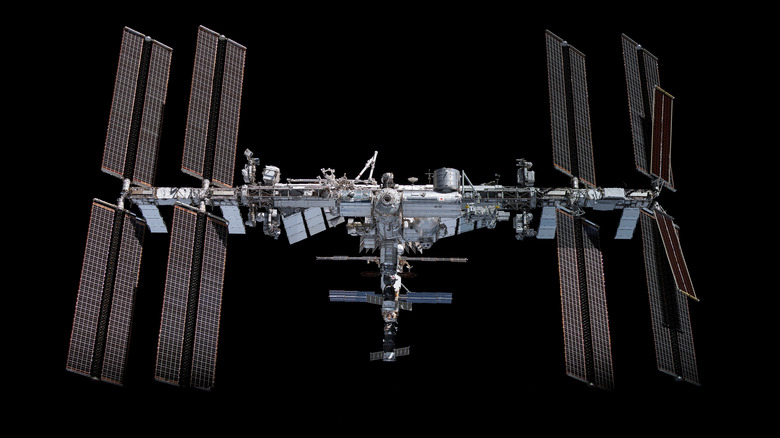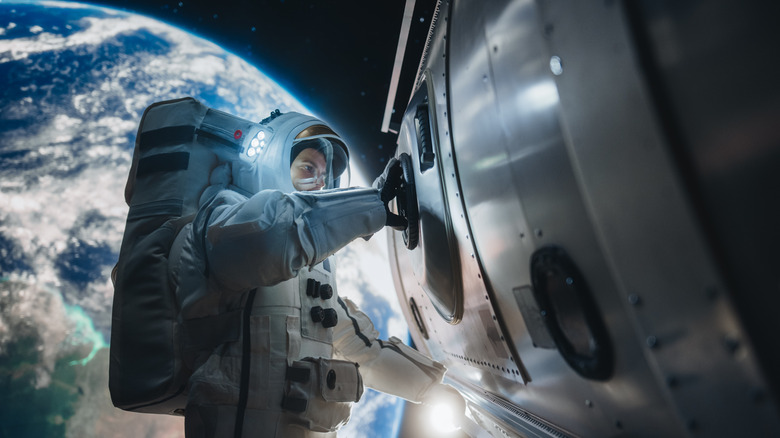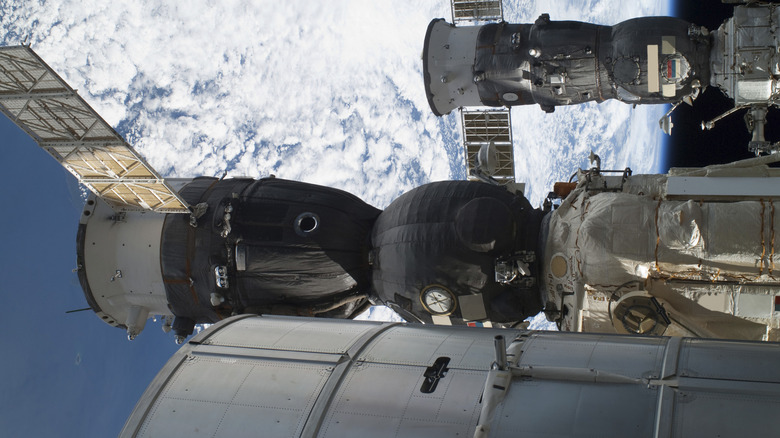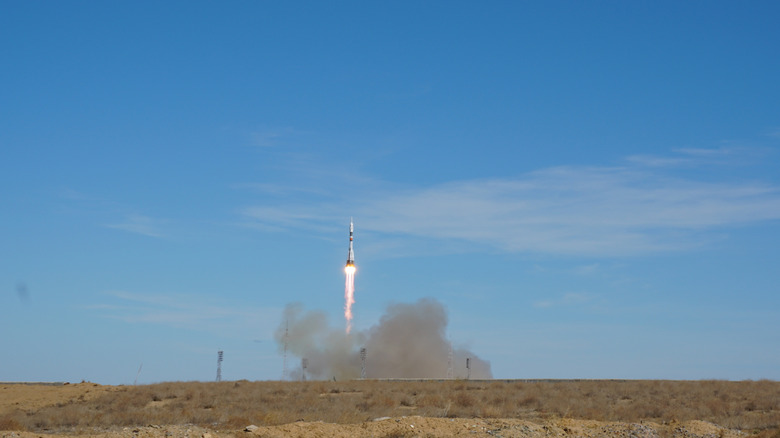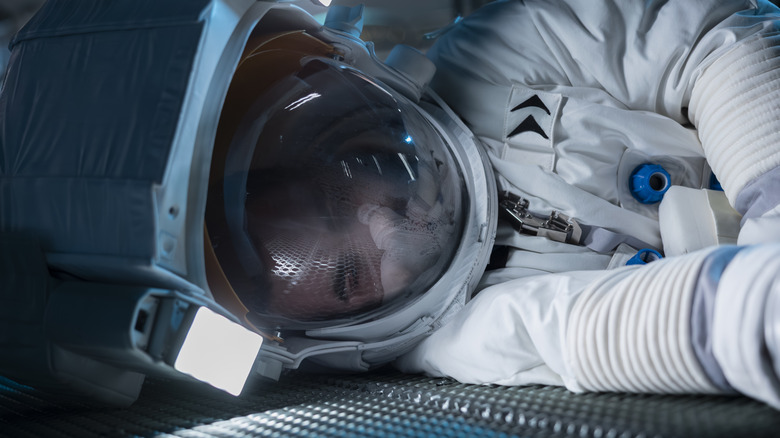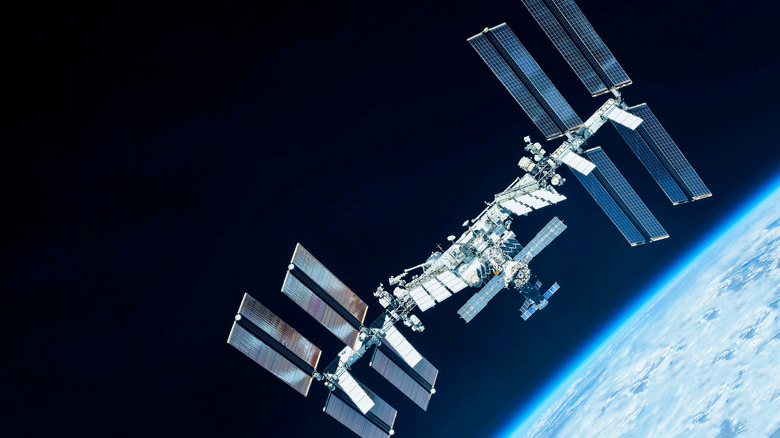The 5 Worst Things To Ever Happen On The International Space Station
For more than two decades, the International Space Station (ISS) has been humanity's permanent home in orbit. It's a laboratory, a workplace, and a symbol of global cooperation. Remarkably, through all these years of continuous habitation, no astronaut has ever died aboard the ISS. That record is a testament to engineering excellence, rigorous safety systems, and the skill of the crews who live and work in one of the harshest environments imaginable. However, survival in space is never routine.
The ISS has faced its share of close calls, technical malfunctions, and sudden emergencies. Any of these could have spiraled into a catastrophe, from thrusters that spun the entire outpost uncontrollably to flying space junk that barely missed the ISS. These incidents remind us how fragile life can be beyond Earth's atmosphere. Even minor problems can become life-threatening in just moments. So, when a rocket carrying a new crew member disintegrated mid-launch, or when a leak appeared in a docked Soyuz capsule, the risks of space travel became impossible to ignore. Each of these crises was resolved without loss of life, and they prove that the ISS is not just a science outpost in space, but a frontier where human ingenuity is tested every day.
Almost drowning in space
On July 16, 2013, Italian astronaut Luca Parmitano floated outside the ISS on what should have been a routine spacewalk. However, something deeply unsettling had happened: his helmet began to fill with water. At first, Parmitano felt a strange dampness at the back of his head, as if someone had spilled a drink on him. Minutes later, water crept over his ears, covered his eyes, and blocked his nose. He found himself nearly drowning in the vacuum of space, inside his own spacesuit.
The culprit was later traced to a malfunction in the suit's fan pump separator. That's part of the system that manages cooling water. Instead of staying in its proper loop, water leaked into the helmet, slowly but steadily. In microgravity, the water droplets couldn't fall. Instead, they clung to his face, blinding him and making it hard to breathe. As water filled his ears, Parmitano discovered it was hard to maintain communication.
Fortunately, the astronaut remained calm under pressure, and he made his way back to the airlock, although essentially blind and very disoriented. Fellow astronauts guided him by touch and voice commands, and he managed to re-enter the station before the situation turned fatal. NASA later described this incident as one of the scariest close calls in the history of the ISS.
Small hole, big problem
On December 14, 2022, the ISS crew and mission controllers were jolted by a startling discovery: the docked Soyuz MS-22 spacecraft was leaking coolant. The culprit? A suspected micrometeorite impact punctured the spacecraft's external radiator loop. The result of the impact was a tiny hole (around 0.8 mm) through which coolant began to vent into space. The leak was first noticed by pressure sensor readings, triggering the cancellation of the planned spacewalk and immediate evaluation of the spacecraft's status. Although the internal modules remained habitable, temperatures were expected to climb without the protection of the cooling system.
The biggest danger was that the Soyuz was supposed to serve as a lifeboat for the three-person crew on the ISS (NASA's Frank Rubio and Russians Sergey Prokopyev and Dmitry Petelin). Without a functioning Soyuz, these astronauts were left without a safe, guaranteed return vehicle in case of an emergency. To solve this, the engineers had to launch the replacement Soyuz MS-23 without any crew. However, that also meant the crew onboard the ISS had to extend their stay. MS-22 eventually made its way to Earth. In 2023, it landed uncrewed, allowing the team on the ground to examine it and determine what went wrong.
When a routine task goes wrong
Just minutes after liftoff, what was supposed to be a routine crew rotation to the ISS turned into one of the most dramatic mission aborts in modern spaceflight history. The Soyuz MS-10, carrying Russian cosmonaut Alexey Ovchinin and NASA astronaut Nick Hague, suffered a critical failure. One of the rocket's boosters didn't separate cleanly and was ripped apart when the collision with the core stage happened.
In moments like these, there's no time for debate. The launch escape system automatically kicked in, ripping the crew capsule away from the failing rocket. Ovchinin and Hague endured a harrowing ballistic re-entry. Pulling forces of around 7Gs plummeted their capsule back to Earth. For two long minutes, the world watched uncertainly if the capsule, or its crew, would survive.
The capsule landed safely in the Kazakh steppe, and mission control was finally able to breathe again. The crew walked away shaken, but unharmed. This incident proved that, although the design of the Soyuz is decades old, it remains one of the most reliable lifeboats in human spaceflight. Yet this incident is a reminder of how razor-thin the margin is between success and disaster in launching people into orbit. During another launch, a Soyuz was struck by lightning but was unaffected by the event. Every ascent to the ISS is a gamble where even proven technology can fail spectacularly.
The invisible killer
The slow but steady drop in the cabin pressure aboard the ISS in late August 2018 began quietly. At first, the numbers looked like a routine fluctuation. But within hours, flight controllers and the crew realized they were dealing with something much more serious: a leak. The source was traced to a docked spacecraft, Soyuz MS-09. Inside the orbital module, astronauts found a tiny 2-millimeter hole. That's just wide enough to let precious air escape into the vacuum of space. The station wasn't in immediate danger, but if left unchecked, even a pinprick like this could have ended in full depressurization. That's a nightmare scenario in orbit.
Working with remarkable calm, the crew first sealed the hole with Kapton tape to stop the leak. Then they used epoxy and gauze to reinforce the patch. The quick fix helped, but the mystery of the hole's origins lingers. Later, the astronauts performed a spacewalk to examine the hole from the outside and learn if it was caused by a manufacturing defect, an impact with space debris, or even sabotage. However, to this day, the exact origin of the hole remain a point of debate. What's not in doubt is the severity of the threat. In space, air is life, and the ISS carries only so much of it. A hole no bigger than a drill bit could have cost the lives of astronauts and billions of dollars in hardware.
Spinning station
When Russia's long-delayed Nauka science module finally docked with the ISS in July 2021, it was supposed to be a celebratory moment. Within hours, the celebration turned into an alarm. Without warning, Nauka's thrusters began firing uncontrollably due to a software error, long after the docking was complete. The effect was immediate and terrifying. The entire ISS began to rotate in orbit. For more than an hour, the station spun one and a half times, about 540 degrees, losing its orientation. Inside, the astronauts could only watch the alarms blaring, while flight controllers on Earth scrambled to counter the rogue thrusters by firing those on other docked spacecraft.
Why does orientation matter so much? The station's solar arrays, cooling systems, and communications all depend on precise alignment. A wild spin risks structural stress, snapped connections, or loss of attitude control altogether. Had controllers not regained command, the world's most expensive research outpost (valued at over $100 billion) could have been damaged beyond repair. Eventually, Nauka exhausted the remaining fuel, and the station was stabilized. But the close call rattled both NASA and Roscosmos. It highlighted how even long-tested docking procedures can go sideways, and how vulnerable the ISS remains to the quirks of complex machinery that it depends on. What should have been a routine addition to the orbiting laboratory became one of the most dangerous incidents in the history of the ISS.
